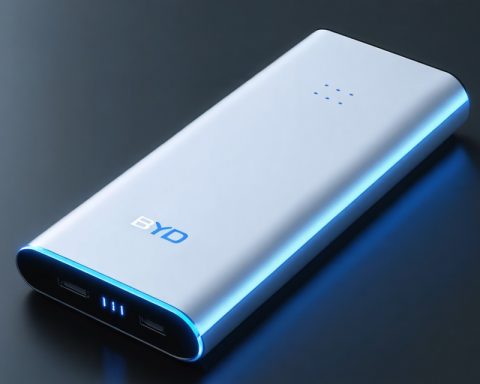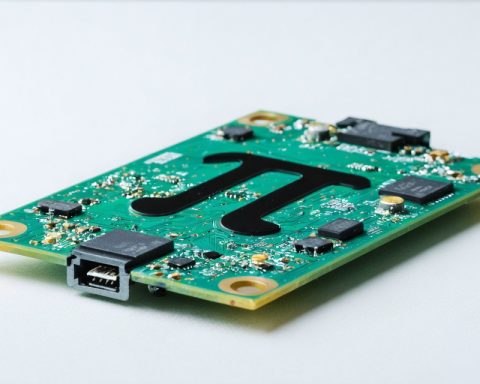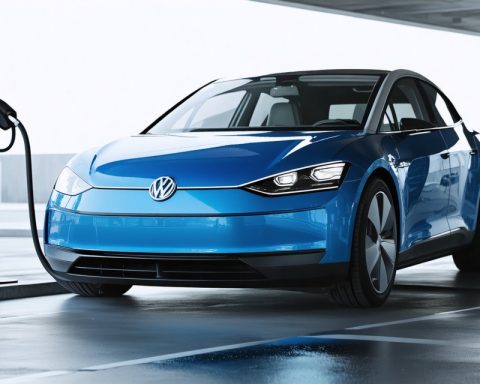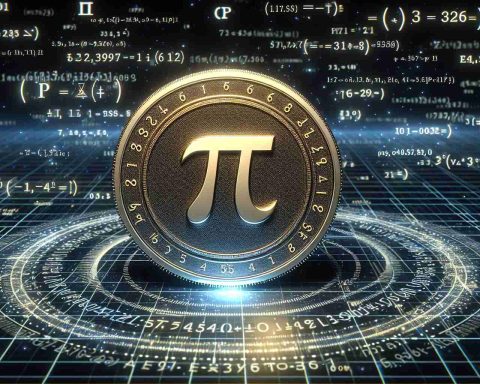- Sphere Energy, an EV sector innovator, introduces an AI-driven battery simulation model that dramatically cuts traditional battery validation timelines.
- The model uses data to accurately predict battery performance and longevity, eliminating the need for lengthy physical testing.
- Founded by Luca Scherrer, Lukas Lutz, and Daniel Alves Dalla Corte, the company integrates expertise from chemistry, AI, and software development.
- Sphere Energy’s collaboration with NVIDIA Inception and IBM’s R&D enhances their AI models, pushing the boundaries of battery innovation.
- This technology positions Western manufacturers to excel in the competitive EV industry, providing a competitive edge through data-centric methodologies.
- The breakthrough promises to revolutionize battery development with increased speed and sustainability in the global race for EV market leadership.
In the heart of Augsburg, beneath the shadows of medieval spires, technological innovation surges forward. Sphere Energy, a promising player in the electric vehicle (EV) sector, has launched an ingenious AI-driven battery simulation model, poised to redefine the landscape of battery development.
Where traditional methods linger in lengthy validation cycles—spanning three to four years in Europe and the US—Sphere Energy’s model slices through this timeline with surgical precision. The new technology thrives on data, learning from it to predict battery performance and longevity with uncanny accuracy. It eschews the cumbersome processes of physical testing, bringing agility and speed where cumbersome trial-and-error once reigned.
The secret to this innovation springs from the minds of Luca Scherrer, Lukas Lutz, and Daniel Alves Dalla Corte, a trio of visionary founders whose roots in the realms of chemistry, AI, and software development are as deep as they are wide. Together, they have weaved an intricate tapestry of digital twin technology, crafting a virtual environment where battery cells undergo rigorous simulation.
But Sphere Energy is not just a standalone beacon. Their inclusion in the NVIDIA Inception program, coupled with a robust partnership with IBM’s R&D team, infuses their AI models with the capability to adapt and thrive. This collaboration fuels fresh methodologies, setting a new benchmark in an industry desperate for innovation.
This AI-powered revolution doesn’t merely accelerate the path to production; it holds the key to major breakthroughs in the global EV race. Sphere Energy’s model offers a lifeline to Western manufacturers, positioning them to leapfrog into the future, turning data into their sharpest competitive edge. As the wheels of change continue to turn, this groundbreaking technology heralds a new dawn of competitiveness and sustainability in battery innovation.
Revolutionizing Battery Development: How Sphere Energy’s AI-Driven Model is Changing the Game
How-To Steps & Life Hacks
Sphere Energy’s AI-driven battery simulation model has significant implications for battery developers and manufacturers worldwide:
1. Integrate AI Models: For businesses looking to adopt this technology, begin by integrating Sphere Energy’s AI models into existing battery development frameworks. This requires collaboration between battery engineers, AI specialists, and IT professionals.
2. Leverage Digital Twins: Use digital twin technology to create accurate virtual representations of battery cells. This allows for extensive testing in a controlled virtual environment, reducing the need for physical prototypes.
3. Accelerate Development: By simulating battery performance and longevity, streamline the development process to achieve production-ready quality faster, bypassing traditional multi-year validation cycles.
4. Continuously Learn and Adapt: Utilize data from real-world battery performance to refine and improve AI predictions, ensuring ongoing enhancement of the simulation model.
Real-World Use Cases
– Automotive Industry: Major car manufacturers can use Sphere Energy’s models to quickly develop and test new battery technologies, reducing time-to-market and improving competitiveness in the EV sector.
– Consumer Electronics: Companies developing smartphones, laptops, and wearable devices can leverage these AI models to enhance battery efficiency and lifespan, significantly enhancing user experience.
– Renewable Energy Storage: Businesses working on grid storage solutions can integrate these models to optimize the life and efficiency of large-scale battery installations.
Market Forecasts & Industry Trends
The global battery market, especially within the EV sector, is expected to grow exponentially. According to a report by MarketsandMarkets, the global EV battery market is projected to grow from USD 27.3 billion in 2021 to USD 67.2 billion by 2025. Sphere Energy’s models can significantly influence this trend by reducing barriers to innovation and production.
Reviews & Comparisons
Sphere Energy stands out in the industry due to its novel approach compared to traditional battery development companies. By using AI and digital twin technology, Sphere Energy dramatically reduces the time for product validation cycles, offering a distinct competitive advantage over traditional methods reliant on physical prototypes.
Controversies & Limitations
– Data Security Concerns: As with any AI-driven technology, there are concerns regarding data security and privacy, particularly with sensitive proprietary data from partnerships.
– Scalability Challenges: While promising, it remains to be seen how scalable Sphere Energy’s solutions are across different battery chemistries and applications.
Features, Specs & Pricing
Sphere Energy’s models are tailored for flexibility and can be integrated across a variety of battery chemistries and manufacturing scales. While specific pricing details are proprietary, the cost savings from reduced prototyping and testing are expected to outweigh the investment in technology over time.
Security & Sustainability
Sphere Energy places a strong emphasis on data security with partnerships such as IBM. The technology is designed to be more sustainable by reducing material waste and emissions associated with extensive physical testing.
Insights & Predictions
– Increased Adoption: As more companies recognize the time and cost benefits, adoption of AI-driven simulation models will rise.
– Enhanced Global Competitiveness: Western battery manufacturers can enhance their market position against Asian competitors, who traditionally dominate the sector.
Tutorials & Compatibility
Sphere Energy’s modeling system is designed with ease of integration in mind, compatible with a range of existing technological infrastructures. Companies will require tailored training for staff to fully leverage the AI models’ capabilities.
Pros & Cons Overview
Pros:
– Significant reduction in development time
– Enhanced predictive accuracy for battery performance
– Potential for substantial cost savings
Cons:
– Initial integration and training could be resource-intensive
– Potential security risks with data handling
Actionable Recommendations
– Stay Ahead of the Curve: Businesses should explore integrating AI-driven models to remain competitive in the rapidly evolving battery market.
– Focus on Collaboration: Partner with technology leaders like Sphere Energy to leverage their expertise and innovative solutions.
– Invest in Security: Prioritize data security measures to protect proprietary information as AI systems become more intertwined with core business operations.
For further modernization and innovation in battery technology, consider exploring partnerships with platforms like NVIDIA and IBM.














